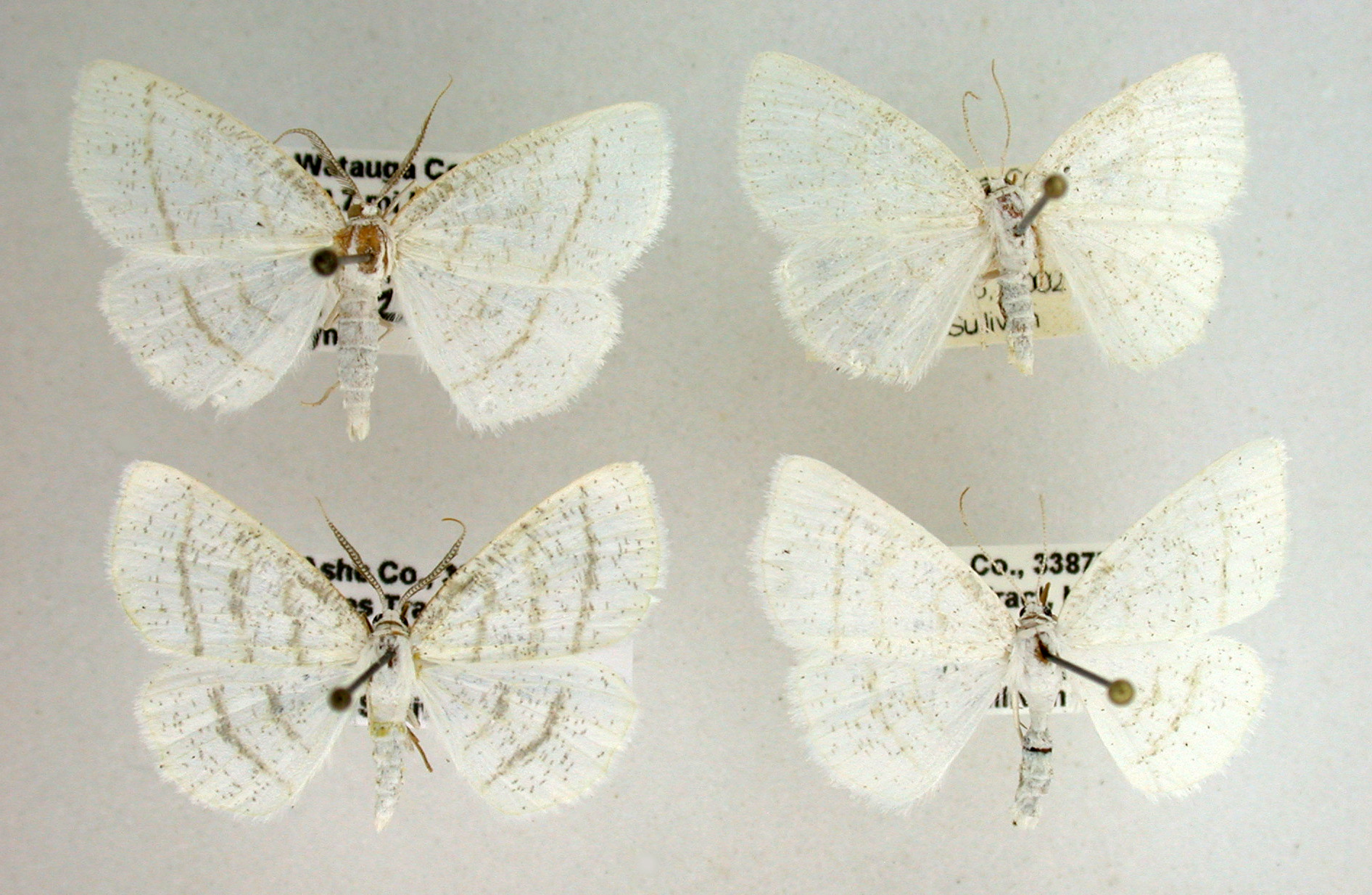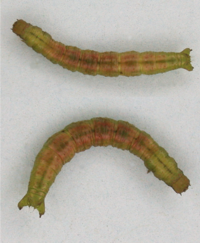Identification
Field Guide Descriptions: Covell (1984); Beadle and Leckie (2012) Online Resources: MPG , BugGuide , iNaturalist , Google , BAMONA , GBIF , BOLD Technical Description, Adults: Forbes (1948); Rindge (1956); McGuffin (1981)Technical Description, Immature Stages: Forbes (1948); Wagner et al. (2001)
Adult Markings: A medium-sized, white Geometrid usually marked with three grayish lines. Keys for specimens of Cabera from North America are given in Forbes (1948) and McGuffin (1981). For the most part, however, they do not work for our individuals of C. erythemaria and C. variolaria , both of which can be marked with well defined crosslines or be almost entirely white. For males the color of the pectens is the best external character: white in C. erythemaria and black in C. variolaria (with the occasional white scale). Easily confused with other small white geometrids such as Lomographa vestialata (smaller, pearly white, no pectinations), Gueneria similaria (orangish wash), Scopula ordinata (larger, pointed forewings), and perhaps worn specimens of Speranza pustularia (crosslines reddish and widening at costa).
Wingspan: 25 mm (Forbes, 1948)Forewing Length: 12-16, males; 11-16 mm, females (Rindge, 1956)
Adult Structural Features: Antennae are pectinate in the males, simple in the females. The pectinate antennae helps distinguish males of this species from those of Lomograpa , Gueneria , and Scopula , all of which have simple antennae. The absence of the basal valve projection distinguish males from other species in this genus. The basal valve projection in the male is diagnostic as is the flared ostial opening in the female.
Genitalia and other structural photos
Adult ID Requirements: Identifiable from photos showing hindwings, abdomen, or other specialized views [e.g., frons, palps, antennae, undersides].
Immatures and Development: Larvae are green and pink with squarish heads and a series of paired, mid-dorsal spots (see Wagner et al, for an illustration and more detailed description). Caterpillars of C. erythemaria and C. variolaria may be indistinguishable and should be reared to adulthood in order to determine their identity (Wagner et al., 2001).
Larvae ID Requirements: Identifiable only through rearing to adulthood.

 »
»


 »
»
